|
|
 |
|
|
The Thunder From Down Under
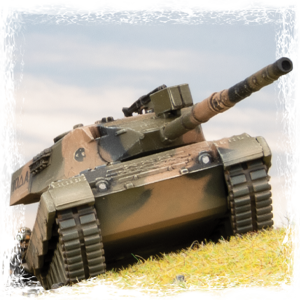 |
The Thunder From Down Under
By For Warned Forearmed
Hi all, and welcome to a brief overview of Australian military history as part of the new NATO release with your local S2 (Intelligence Officer). Today, we are talking about the Thunder From Down Under, Australian armed forces, specifically, the units that makeup Australia’s 1st brigade (the majority of these units either being mechanised or armoured). These main units at the time were the 1st Armoured Regiment, 2nd Calvary Regiment and 5/7 Royal Australian Regiment (infantry). We will also have a list that incorporates all three units and some tactics to use with that list.
|
|
The Australian army has a long and proud history of working with tanks, especially during World War I in which members supported the initial advance and debut of the British tanks on the Western Front in 1916. While the first armoured regiment has only been around for 70 years, the Australian army has had a proud history with armoured vehicles including the development of its own tank during World War II.
|
|
The tanks used by the first armoured division were the M3 Stuart, M3 Lee and the Matilda 2. It was also during this period that the Australian cruiser tank MK1 “Sentinel” was developed, however, it never progressed into mass production for service. The first actual battle using armour by Australians in World War II was by the Sixth Division cavalry regiment using captured Italian M11 tanks as their own were still coming.
|
|
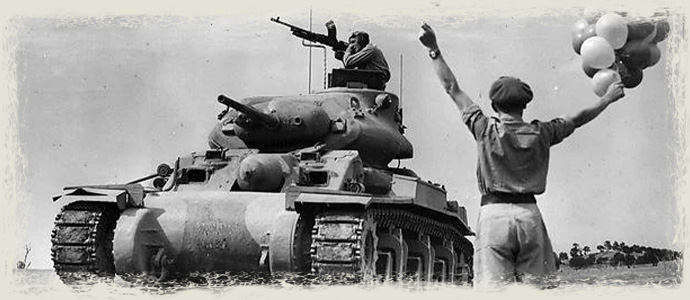
|
|
Even though Australia was involved in the Korean War Australian tanks did not deploy, instead, Australian troops relied on American and British armour for support. It was not until the Vietnam War that Australian tanks were deployed in mass since World War II. It was during this war that C Squadron distinguished itself in the battle of Coral-Balmoral and was awarded a Unit Citation for Gallantry. Other engagements include Hat Dich and Binh Ba.
|
|
After Vietnam, the unit acquired the new Leopard 1 tanks in 1977, which would go on to serve faithfully for the next 30 years. It was also at this time that the unit received its mascot - a black leopard named Paratus. After 30 years of service, the Leopard tank was replaced with the US M1A1 Abrams tank in 2007, however, these were not the more heavily armoured US version and the ammo was slightly different.
|
|
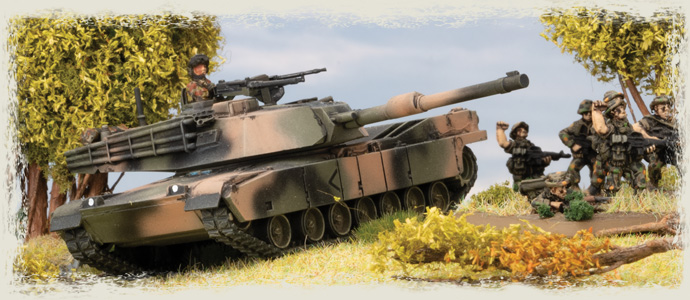
|
|
Now to the 2nd Cavalry Regiment – or 2 Cav as it’s known within the Australian Defence Force. It was formed in 1965 as the "1st Cavalry Regiment", (it is the second most senior regiment in the Royal Australian Armoured Corps). In 1970, the regiment was redesignated as the "2nd Cavalry Regiment" to differentiate it from the 1st Armoured Regiment. During the Team Yankee period, 2 Cav was the eyes and ears of the sole mechanised force in the Australian Army, the 1st Brigade.
|
|
Since its formation, the 2nd Cavalry Regiment has played a key role in Australian military operations. In 1999, ‘C’ Squadron deployed to east Timor as part of the initial Australian contribution to INTERFET.
|
|
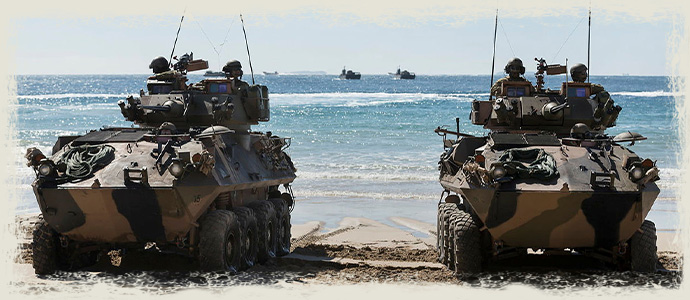
|
|
More recently, 2 Cav Regt has deployed its ASLAVs to Iraq in the aftermath of the 2003 invasion. The regiment’s initial role was to provide armoured transport for Australian diplomats and military personnel based in Baghdad and Northern Iraq. This service resulted in 2 Cav being one of only a few Regiments of the Royal Australian Armoured Corps to see action since Vietnam.
|
|
In 1985, the unit was comprised of two squadrons, also referred to as sabre squadrons. The makeup of these squadrons were troops of M113s LRV and the M113 MRV, also nicknamed the “Beast”. The squadron would have three troops of three M113 LRVs with two M113 MRVs. It also had its own infantry for backup, which was equipped with the same weapons as their brethren from the infantry battalions at the time.
|
|
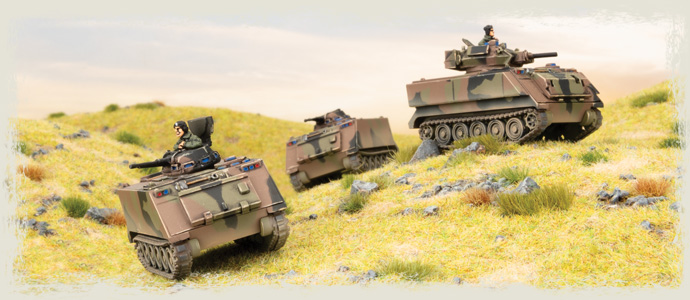
|
|
Based on the doctrine of the time, the idea was that 2 Cav would scout ahead and recon for the heavier armour of 1 Armoured Regiment or the mechanised forces of 5/7th Battalion, Royal Australian Regiment, the sole specialised mechanised infantry unit in the Australian Army at this time.
|
|
The last of the three units is 5/7 RAR. At Tobruk Lines, Holsworthy on 3 Dec 73, 5 RAR and 7 RAR linked to form the new battalion, 5/7 RAR. Soldiers, non-commissioned officers and officers were drawn from both battalions to form the new battalion.
|
|
In 1976, 5/7 RAR began a mechanized infantry trial. After this trial, the battalion returned the majority of its APCs and a company allocation and a limited number of headquarters and specialist vehicles remained, however in 1983, it was decided to equip a second mechanised Company (Delta Company). The battalion was authorised to re-equip to its entire peacetime establishment of APCs in June 1984 and the battalion adopted the suffix “(Mechanized)” from that date onwards. APCs continued to arrive to complete the new establishment until November 1984. The first battalion-level mechanized exercise was ‘TASMAN WARRIOR’ conducted at Shoalwater Bay in late 1985.
|
|
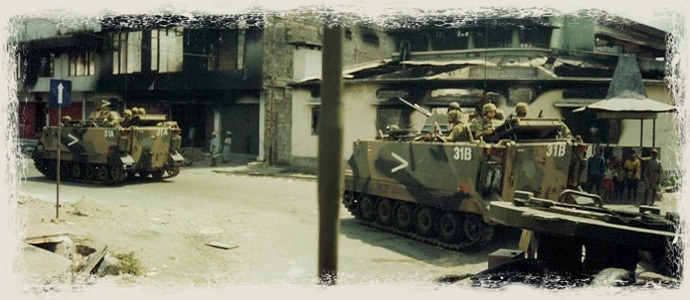
|
|
Through the 80s and 90s, the battalion supported a series of company-level exchanges of four to six weeks with allied armies under the auspices of North Star / Southern Cross with the British Army, Pacific Bond with the US Army, and Tasman Exchange with the New Zealand Army. Numerous junior officers and NCOs participated in individual exchanges for three months with the British, NZ armies and the US.
|
|
The members of the battalion inherited a proud tradition of soldiering and service from those of 5 RAR and 7 RAR at the linking in 1973. They sustained that tradition throughout the long and meagre years of peacetime soldiering in the 70s, 80s and 90s while assisting other Australians to recover from disasters (such as cyclones, fires and floods). The unit also performed well conducting stabilization operations in Zimbabwe, East Timor and the Solomons, peacekeeping in Cambodia and Rwanda, and warfighting in Iraq and Afghanistan. The 5th/7th Battalion served the nation with distinction in both war and peacetime service.
|
|
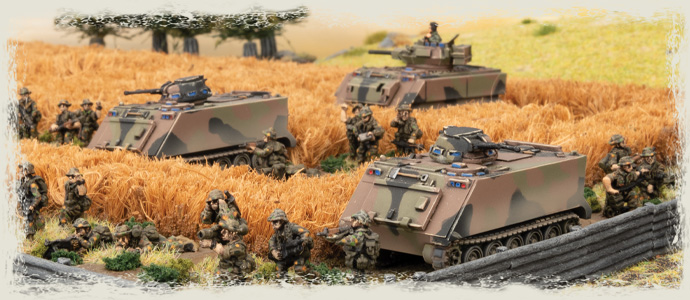
|
|
Here is the force that incorporates all three units of one brigade. It has two Formations; the first being a M113 Formation and an ASLAV Formation:
|
|
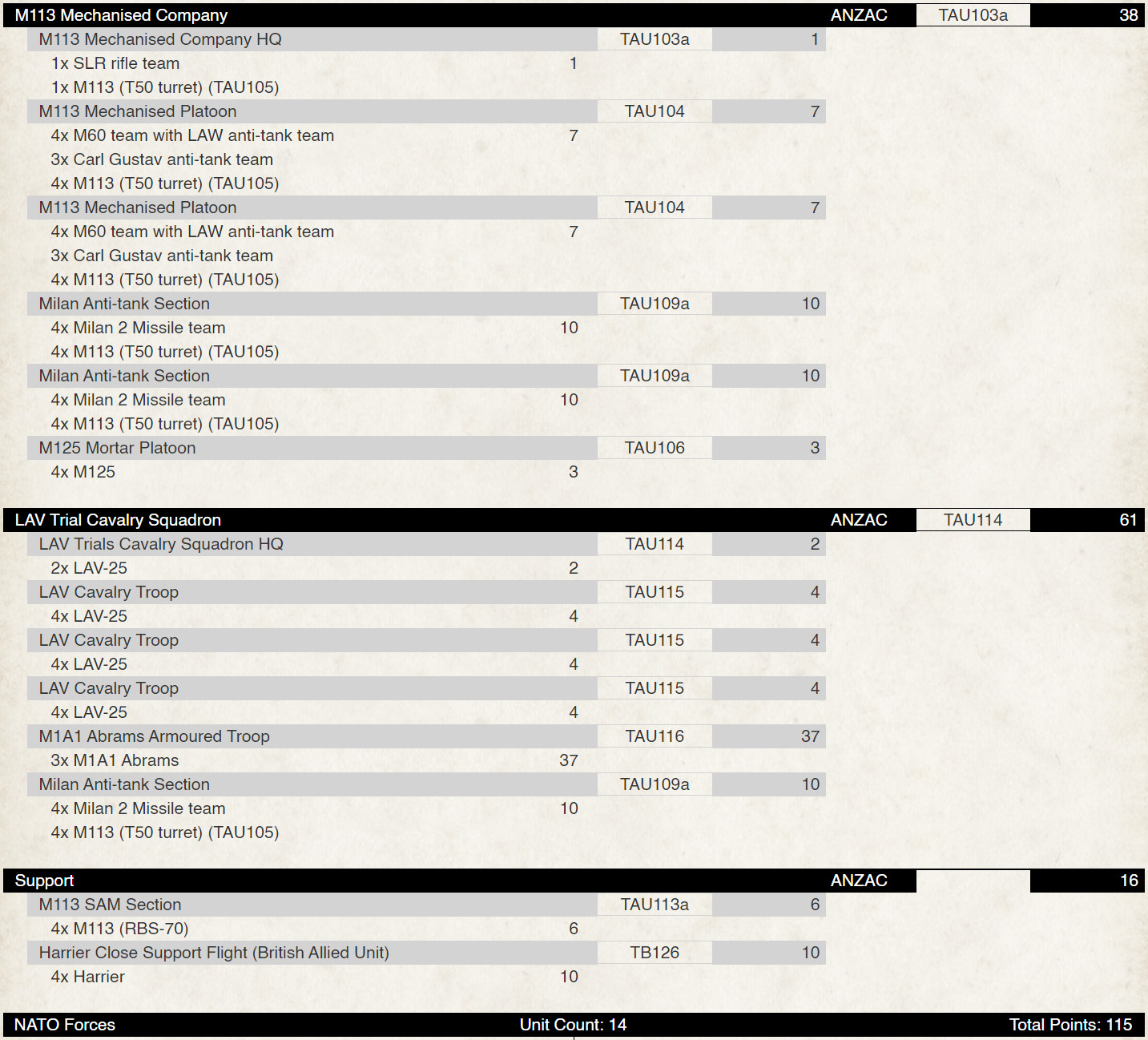
|
|
The second force is a more traditional combined arms list. Both are 115 in line with the tournament points:
|
|
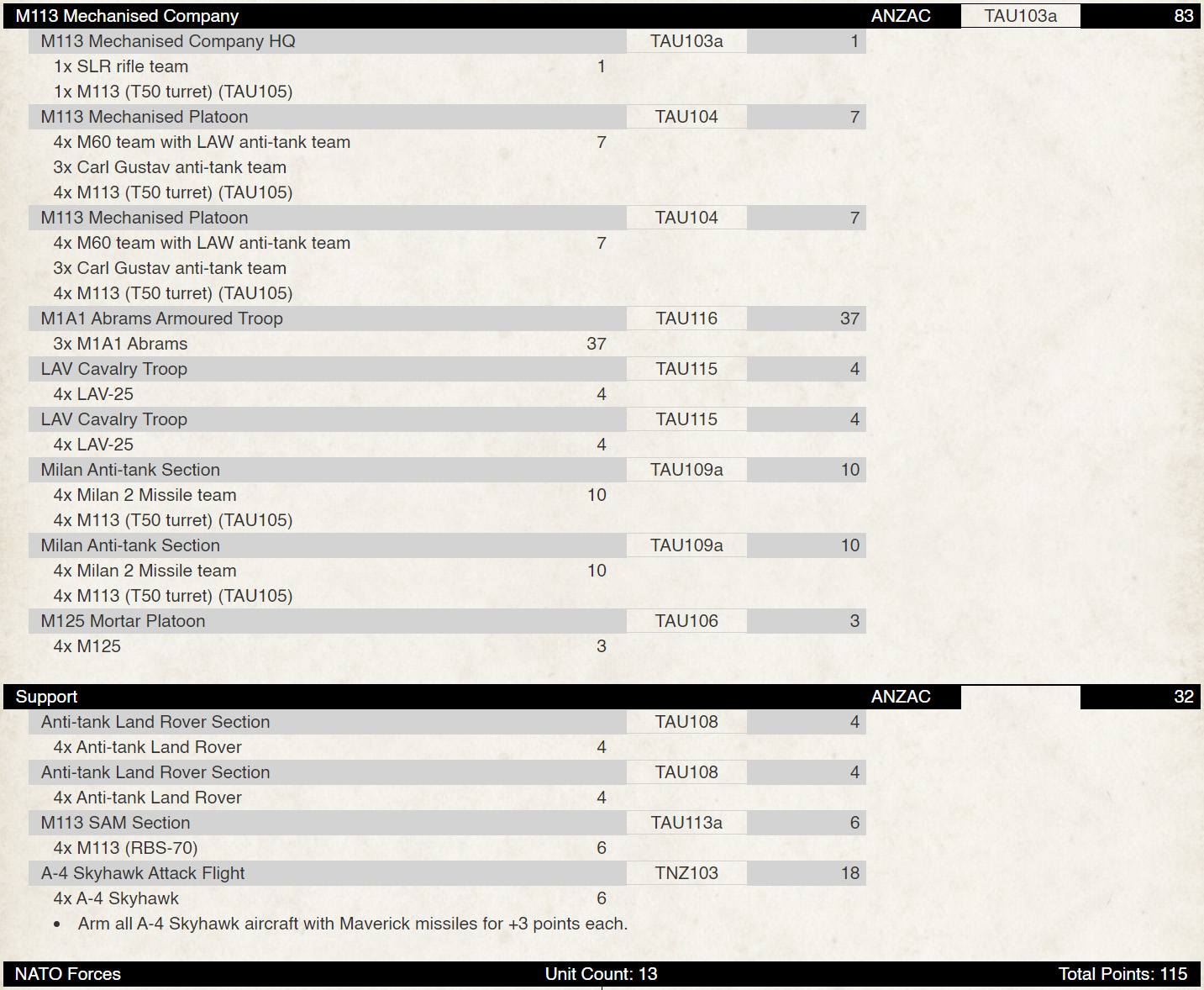
|
|
Both of these lists can hold their own in a tournament environment. Each Formation has M1A1s that will form the base of the reserves in games that require 40% of your force in reserve, the other can be made up of your choice, I prefer to hold off with the aircraft as this will only have a max of 2 Units off at any time.
|
|
The M1A1 does benefit from the Aussie skill over its US counterpart, this can make it a very mobile and high-threat Unit that can act as QRF to hold objectives or to help push forward with the infantry.
|
|
There are bulk Milan Units in both lists as this forms the core AT support for Aussies. With the bonus of Milan 2, the Aussies can now put some serious firepower out to hurt high FA value tanks such as T80, Challenger and US M1A1 variants.
|
|
The mortars are the mainstay artillery support as they are cheap and effective units for both smoke and whittling down infantry units with sustained bombardment.
|
|
The ASLAVs can form the core of your recon elements that can spearhead to provide better field coverage and seek out enemy AA and artillery threats.
|
|
Remember that the majority of an Aussie list has Units that have Anti-helicopter - use those to the full extent to free up your RBS Units for its dedicated role of deterring strike aircraft.
|
|
The infantry do what they do best holding and taking objectives, use them in support of an armoured push with your M1A1s.
|
|
So I hope you all enjoyed this article on the history of the units From the Australian Army’s First Brigade and so use in how to run an Aussie armoured list.
|
|
So until next time, good hunting.
~ For Warned Forearmed
|
|
|
|